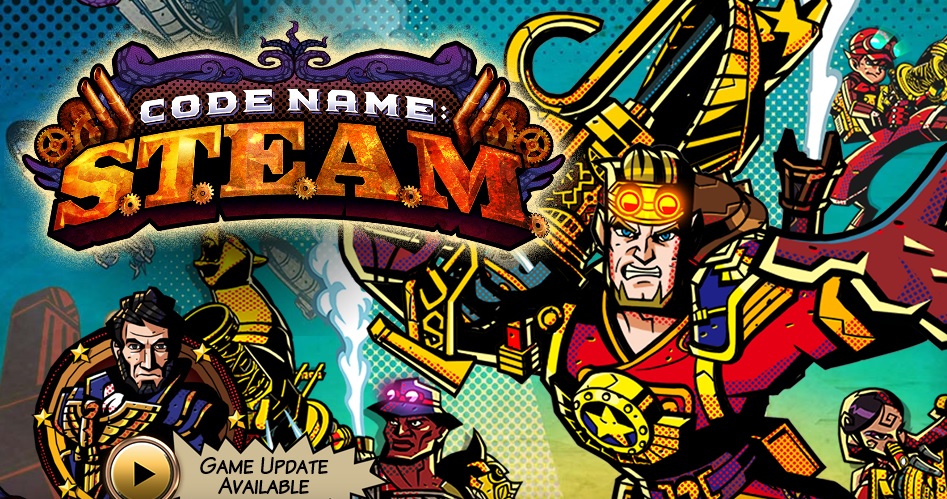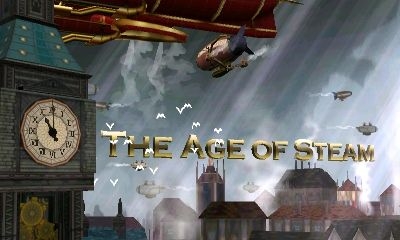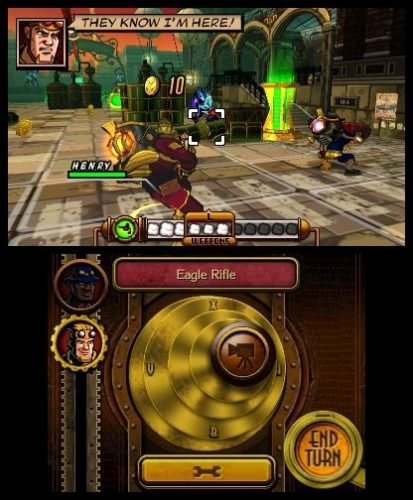TL;DR
Step into a Steampunk London of 1865 where Abraham Lincoln and Tom Sawyer team up to fight aliens in Codename S.T.E.A.M.! This 3D strategy game from Intelligent Systems cleverly blends historical figures with pop culture, all powered by a unique steam mechanic that dictates your every move and attack. Careful planning and steam management are key to victory, but the visuals and music are a bit uninspired. If you're a fan of turn-based strategy or looking for a fresh take on the genre, this title offers a distinct and engaging experience. Discover if this steam-powered adventure is worth your time – dive into the full review to find out!
Steampunk, as a concept, explores an alternate reality where steam power remained the dominant technology, superseding electricity. This leads to a world populated by large, complex, and often unwieldy machines. Codename S.T.E.A.M. transports us to such a world, specifically a Steampunk version of London in 1865. The acronym in the title, while somewhat contrived, stands for Strike Team Eliminating the Alien Menace. Further analysis of the name is perhaps unnecessary.
Codename S.T.E.A.M. blends diverse elements, blurring the lines between established history and fictional narratives. American historical figures from various eras are combined with characters drawn from American popular culture. The game features figures such as President Abraham Lincoln alongside Tom Sawyer and the Cowardly Lion from The Wizard of Oz, all presented with a comic book aesthetic. This amalgamation, while unconventional, proves engaging despite some inherent inconsistencies. Using American history as a unifying element, Intelligent Systems (Advance Wars, Fire Emblem), a team within Nintendo, has crafted a 3D strategy game exhibiting a distinct style and visual presentation.
While the game world draws inspiration from American themes, the game system and core concept bear a resemblance to SEGA’s Valkyria Chronicles (a title set in an alternate version of Europe during a World War-esque conflict), including some aspects of its Cel-Shaded graphics. Steam plays a central role in Codename S.T.E.A.M. and directly influences the gameplay mechanics. Steam serves as the energy source that allows characters to move freely within the 3D environments. Movement ceases when a character’s steam reserves are depleted. Steam also limits the number of attacks and movements available per turn. Thoughtful planning is therefore crucial before ending a turn to avoid leaving characters exposed. Gaining a strategic overview by positioning at least one team member at a vantage point is highly recommended, especially in labyrinthine levels with numerous narrow corridors. Identifying enemy positions allows for preemptive character placement and prioritized targeting, a significant advantage that helps mitigate health depletion.
Maintaining a reserve of steam is critical, allowing for retreat to safer positions before the end of a turn. Certain items can replenish steam mid-turn, a valuable asset in challenging situations. The game mechanics blend turn-based combat with real-time movement. Upon completing a turn, control shifts to the opponent, requiring players to adopt defensive strategies and minimize vulnerabilities. Leaving a character unprotected in an exposed location is a risky proposition. Monitoring steam levels and seeking cover before depletion is essential for mitigating enemy actions. This cycle continues until the designated goal (marked in green) for the level is reached. The single-player campaign is further enhanced by multiplayer opportunities.
Codename S.T.E.A.M. distinguishes itself through its unique premise and gameplay mechanics. Intelligent Systems successfully transitions from their traditional turn-based strategy games (led by Advance Wars), which emphasized resource management and strategic warfare, to a title that prioritizes environmental utilization (including destructible environments), tactical awareness, and combat maneuvers. While resource management and long-term planning remain relevant, they are less central than in titles like Advance Wars or Fire Emblem. Despite the shift, the legacy of those games is evident. Even with free character movement within a 3D environment, the underlying map design retains a square grid structure, where moving a character one square consumes a unit of steam.
The graphics in Codename S.T.E.A.M., while functional and stylized, are not exceptionally detailed. The Steampunk world could have benefited from more intricate environments, improved lighting, and a more nuanced color palette. The visuals appear sharper on the smaller 3DS screen than in larger screenshots, suggesting that the game should be experienced firsthand to fully appreciate its aesthetic. The music is unremarkable, consisting of generic rock tracks that fade into the background. The sound effects are adequate but lack distinction. Similarly, the plot, while functional as a narrative driver, is not particularly memorable.
Codename S.T.E.A.M. is primarily valued for its gameplay, rewarding tactical decision-making and demonstrating innovation for Intelligent Systems, setting it apart from their previous titles. This makes it an appealing choice for players familiar with Fire Emblem and similar turn-based strategy games seeking a familiar yet partly novel experience with a distinct pace. Furthermore, for those anticipating a new Valkyria Chronicles from Sega, Codename S.T.E.A.M. may serve as a worthwhile alternative.




